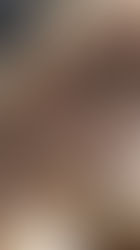The Flowers and the Trees for Bees
- By Nancy J. Bailey
- Feb 14, 2017
- 3 min read
The Flowers and the Trees
How to Feed the Bees

When the eaves start dripping and the river crackles and flows beneath its thinning frozen membrane, the bees are called out of hiding. They are responding to perhaps the same urges taunting the rest of nature’s creatures who spend the winter under cover: The mysterious Knowing. The inherent knowing that the cold days are over, the sun’s angle has changed, the frogs are hatching.
Probably it’s simply hunger which drives them out. But unlike the bear who has slept all winter, resorbing greasy layers of body fat, or the chipmunk who wakes up now and then to snack on his stash of sunflower seeds, the bees have spent the winter shivering, burning precious energy ingested from their quickly-depleting honeycombs. When the bees emerge from their weathered hives, they can’t dig for hidden food or hunt for wayward mice. They have to find nectar, fast.
Many beekeepers grow fruit trees for this reason. The blossoms of cherry and apple bloom early, although the first source of food for bees might be the flowers and even the sap of the maple tree. Therefore, the maple is a handy tree to have around for anyone who wants to keep bees. Unfortunately, these trees flower most profusely when maturing at thirty years old!
However, establishing trees doesn’t take as long as one may think; especially where the bee is concerned. Many fruit trees can be purchased in full bloom, and if planted with correct instructions (plenty of drainage, native soil with high nitrogen fertilizer) fruittrees will often bloom again the following spring.
The tree probably most appreciated by bee keepers is the basswood. Its towering form is a feast for the eyes, and its fragrant blooms a feast for the bees.

Other trees that attract honeybees include:
Black Locust
Bottlebrush Buckeye
Chinese Chestnut
Flamelead Sumac
Fragrant Sumac
Japanese Pagota
Lilac
Little Leaf Linden
Meadowsweet
Redbud
Sourwood
Staghorn Sumac
Tulip Tree

As the maple sap dries and the spring days lengthen, dandelions become a nemesis for gardeners everywhere. The lawn that remains spotted with gold might be the beekeeper. Bees thrive on dandelion. It is one of the most beneficial of flowers for bees.
Not surprisingly, another of the most important flower species within the state of Michigan is clover. Many varieties are ideal for bees, providing a bounty of both pollen and nectar. White (“Dutch”) clover is popular as a “living mulch” system, planted between rows of fruit such as strawberries and blueberries, and used in vegetable gardens and around trees. The thick mat of roots provides protection from weeds, and can prevent the soil from eroding. Clover produces ample nitrogen, and thrives with mowing. It can survive heavy traffic and grows well in shade.
Clover is hardy and grows easily, although it prefers clay over sandy soil. According to SARE.org (Sustainable Agriculture Research and Education), clover does best if mowed no shorter than two or three inches.
Another native bee-friendly flower is also a legume: Alfalfa. A beekeeper’s ideal scenario would be to have a location next to a hayfield. The thistle, though not always appreciated by homeowners, is one of the most beneficial food sources for honeybees, according to NASA’s HoneyBee Net. Add milkweed to the list – another bee delight – and it seems the bees cohabitate best with a herd of cattle.
These native plants are not something one would necessarily want to have in a flower bed. A study group at Michigan State University under Doug Landis did a series of tests to discover which native plants were most beneficial to bees while being least attractive to competitive insects. Among the findings were that bees did best when having at least two species of flower to choose from. The ideal mix includes plants that will bloom from spring into fall, so beekeepers may provide the best supply of food throughout the year.
Some garden-friendly flowers that bees love include:
Sunflowers
Coneflowers
Cup plants
Spiderwort
Salvia
Sedum
Lavendar
Even though planting time is traditionally in fall, it’s not too late (or too early) to stock up on bee-friendly flowers for the upcoming season. Now is a good time to plan a new clover patch; to resolve to let the lawn grow and the dandelions pop; to pick up a few packs of sunflower seeds and think about planting a maple tree, while the bees shiver their way into spring.

















































Comments